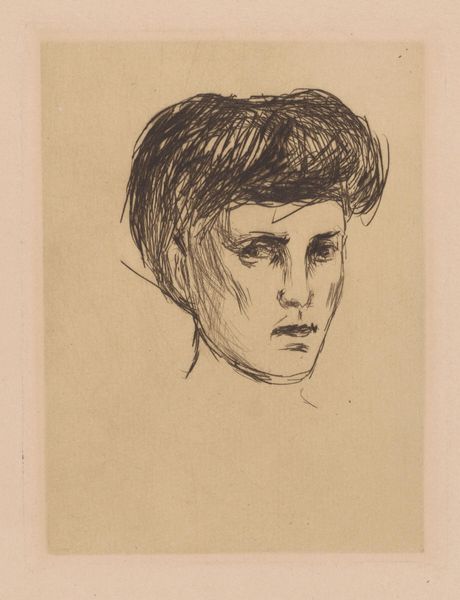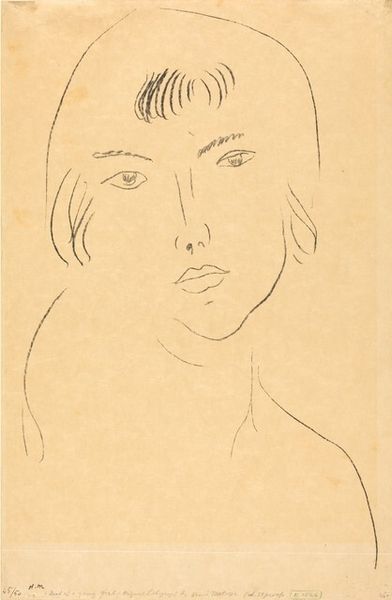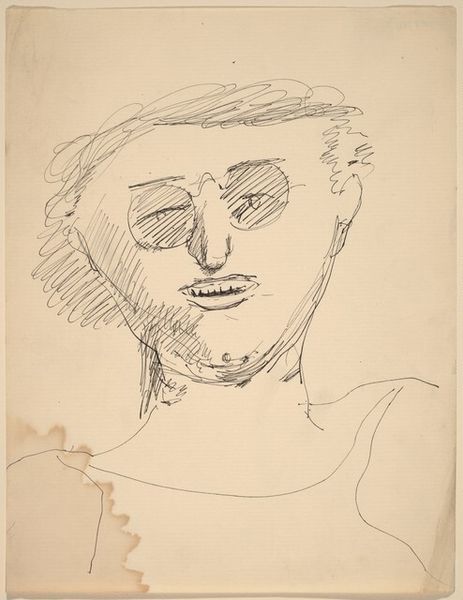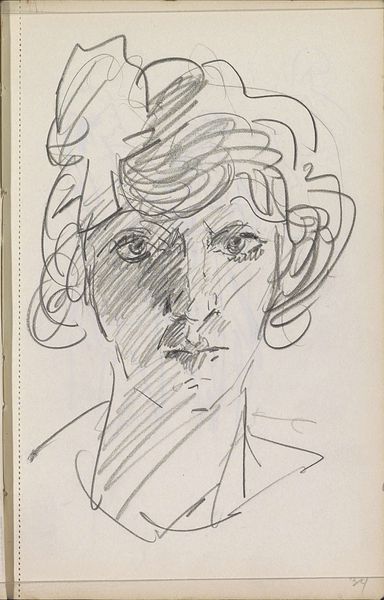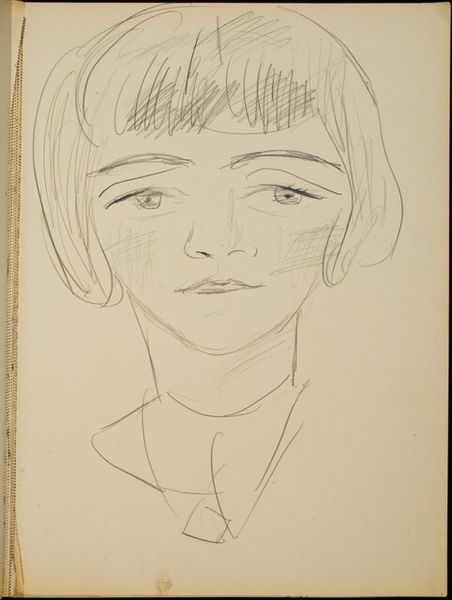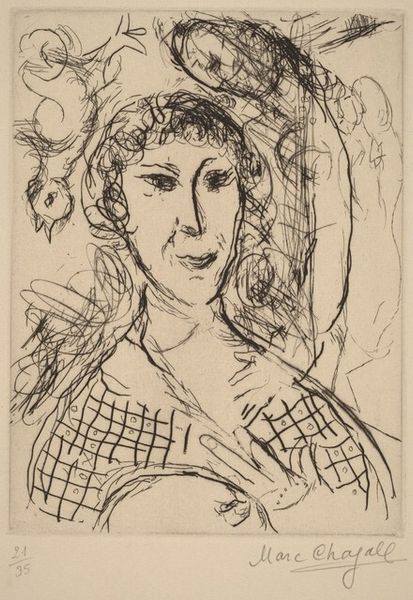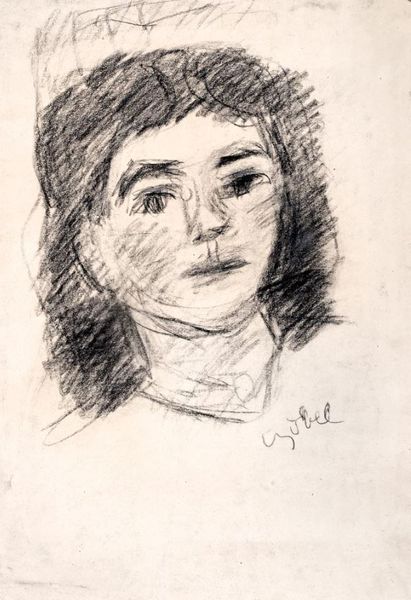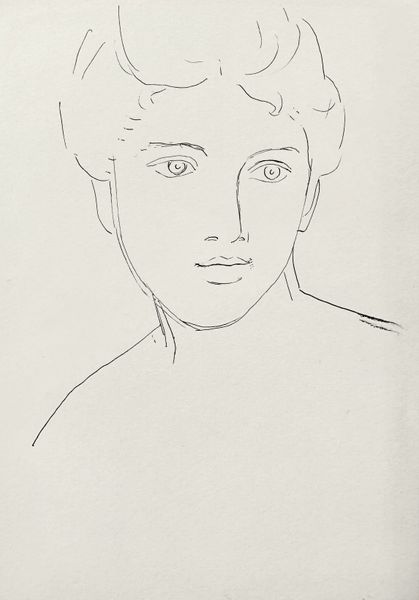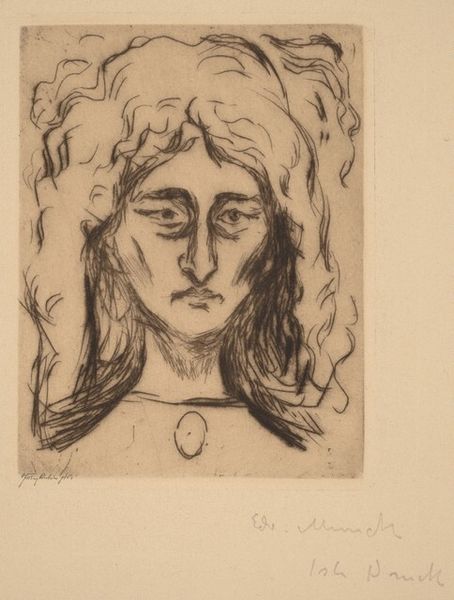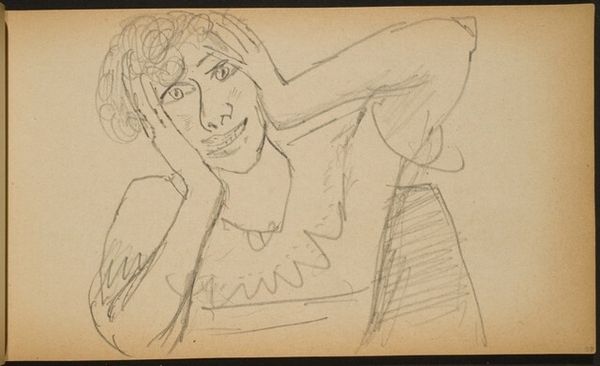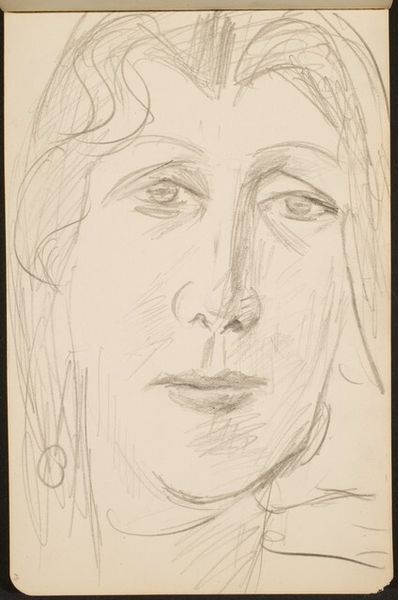
drawing, pencil
#
portrait
#
drawing
#
pencil sketch
#
figuration
#
pencil
#
line
#
portrait drawing
#
early-renaissance
Dimensions: overall: 41.7 x 27.5 cm (16 7/16 x 10 13/16 in.)
Copyright: National Gallery of Art: CC0 1.0
Editor: This is Brancusi’s “Woman’s Head,” a pencil drawing from around 1910. It strikes me as both simple and profoundly evocative; it almost feels like a study in pure line and form. What stands out to you? Curator: Indeed. The beauty lies in the essential reduction of form. Note how Brancusi, even in this early work, anticipates his later sculptures through simplification. The linearity dominates. Consider the contrast between the delicate, almost frenetic, hatching which describes the hair, versus the smooth, confident outlines of the face and neck. What does that tension suggest? Editor: It's almost as if the hair is energy and movement, and the face is serene stillness... a fascinating opposition. So the relationship between line qualities creates the image? Curator: Precisely. Look at how the contour itself defines the volume, replacing traditional shading techniques. This reduction emphasizes the essence of the subject: its geometric structure and subtle asymmetry. The material, humble pencil on paper, amplifies this austere approach. Notice the directness of the artist’s hand. Where do you see any hesitations? Editor: It's quite striking. There's a confidence in the lines. Even the slight imperfections or variations add to that feeling of directness and energy that otherwise might feel sterile or overly rigid. It is about finding a solid abstract expression of something as complex as the human form. Curator: Exactly. Brancusi strips the form down to its bare essence, achieving an archetypal representation through meticulous selection and refinement of line. And what have you gained from closely observing those lines, their placement and relationships, within the drawing? Editor: It's a lesson in how the simplest means can create powerful art. Reducing complexity reveals the structural elegance. Curator: Indeed, understanding form in art involves observing those lines. This work illuminates the potency of distilled form through minimalist execution, and suggests it should be valued on its own terms.
Comments
No comments
Be the first to comment and join the conversation on the ultimate creative platform.
